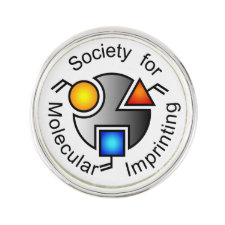
Authors: Schneider HJ, Strongin RM
Article Title: Supramolecular Interactions in Chemomechanical Polymers.
Publication date: 2009
Journal: Accounts of Chemical Research
Volume: 42
Issue: (10)
Page numbers: 1489-1500.
DOI: 10.1021/ar800274u
Abstract: Molecular recognition is the basis for the operation of most biological functions; outside of nature, it has also been developed to a high degree of sophistication within the framework of supramolecular chemistry. More recently, selective noncovalent interactions, which constitute molecular recognition, are being used in intelligent new materials that transform chemical signals into actions, such as the release of drugs. The presence of supramolecular binding sites allows chemomechanical polymers to operate as sensors and actuators within a single unit without the need for any additional devices such as transducers or power supplies. A polymer can be designed so that a particular chemical substance, most often in aqueous surroundings, will trigger either a large expansion or a large contraction, depending on the mechanism. The translation of binding energy into mechanical motion can, with a suitable arrangement of the materials in tubes or on flexible films, be harnessed for unidirectional drives, flow control, the liberation of drugs, or the uptake of toxic compounds, among other applications. Miniaturization of the polymer particles allows one to enhance both the sensitivity and speed of the response, which is of particular importance in sensing. The basis for the selective response to external effector compounds, such as metal ions, amino acids, peptides, or nucleotides, is their noncovalent interaction with complementary functions covalently bound to the polymer network. With suitable polymers, selectivity between structural isomers, and even between enantiomers, as triggers can be achieved. As with supramolecular complexes in solution, the underlying interactions in polymers comprise a variety of noncovalent binding mechanisms, which are not easy to distinguish and quantify, and more so with polymers that are not monodisperse. In this Account, we present systematic comparisons of different polymers and effector classes that allow, for the first time, the characterization of these contributions in chemomechanical polymers: they comprise ion pairing, metal coordination, stacking, cation-π, dispersive, and hydrophobic forces. In contrast, hydrogen bonding has a major role primarily in the hydrogel network structure itself. The fully reversible polymer volume changes are essentially determined by water uptake or release. In gels derived from boronic acid, glucose can serve as a cross-linking effector in promoting contractions via strong, reversible covalent bond formation in a highly distinctive manner. Cooperativity between two different effector compounds is more frequently seen with such polymers than in solution: it leads to logical AND gates by different motions of the particles, with a direct communication link to the outside world. For example, with a polymer that bears several recognition sites, triggering peptides induce motion only if Zn2+ or Cu2+ ions are simultaneously present. The molecular recognition mechanisms that cause volume changes in polymers share similarities with extensively studied supramolecular systems in solution, but there are also remarkable differences. In this Account, we bring the knowledge learned from solution studies to bear on our systematic analysis of polymeric systems in an effort to promote the effective harnessing of the forces involved in chemomechanical polymers and the smart materials that can be created with them
Template and target information: Review - Chemomechanical polymers



Join the Society for Molecular Imprinting

New items RSS feed
Sign-up for e-mail updates:
Choose between receiving an occasional newsletter or more frequent e-mail alerts.
Click here to go to the sign-up page.
Is your name elemental or peptidic? Enter your name and find out by clicking either of the buttons below!
Other products you may like:
 MIPdatabase
MIPdatabase









